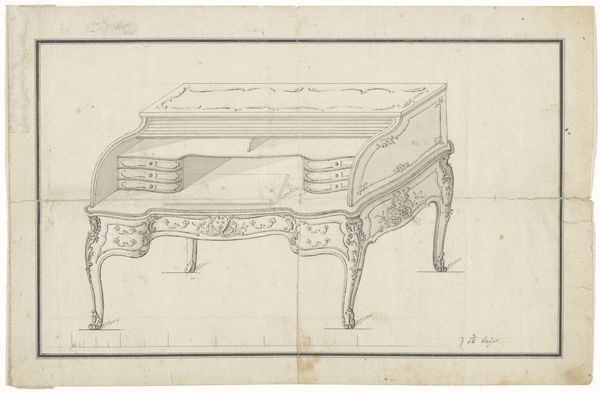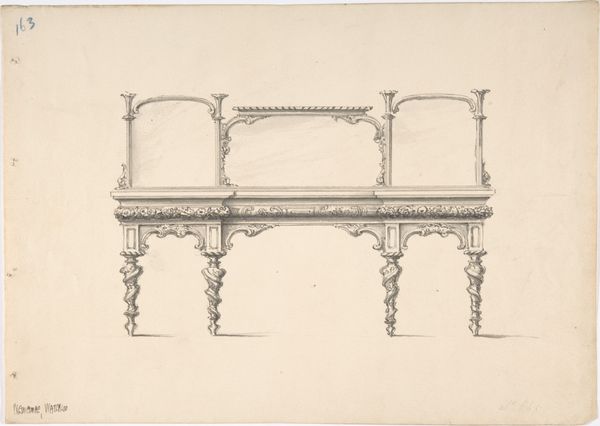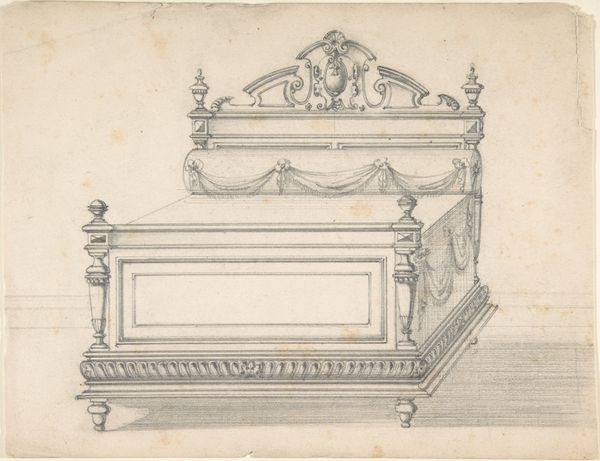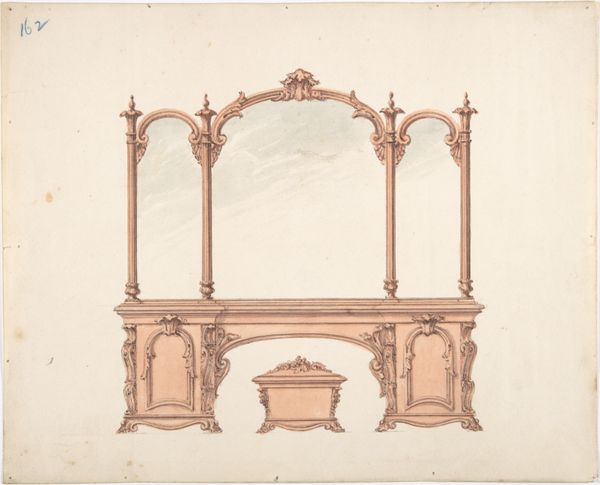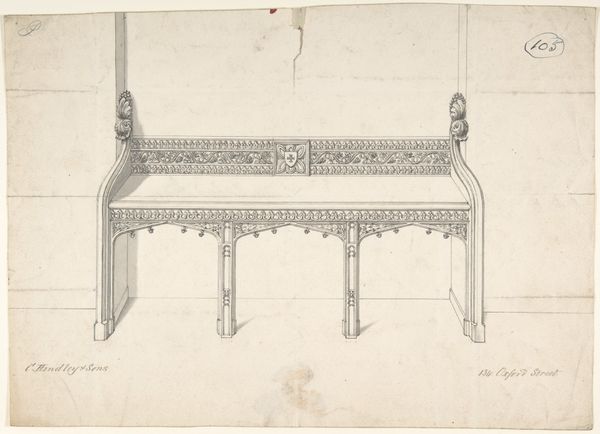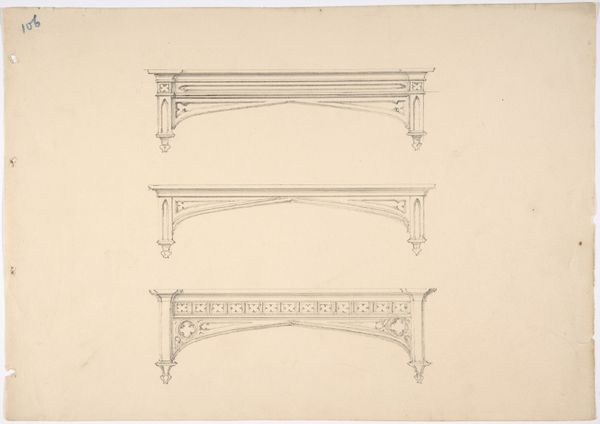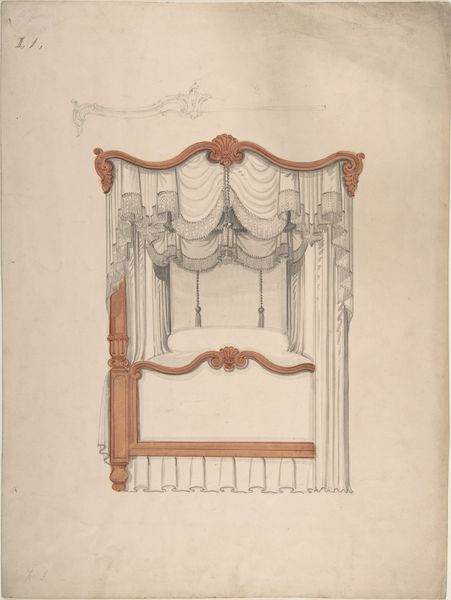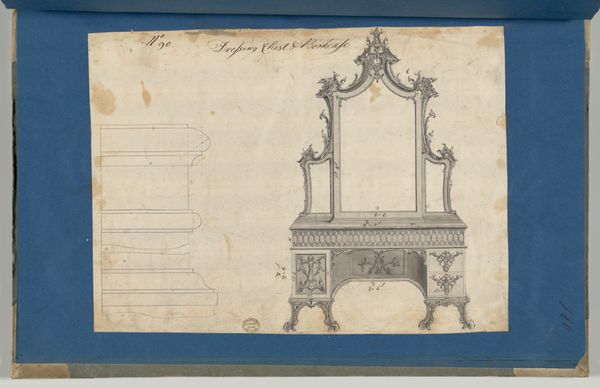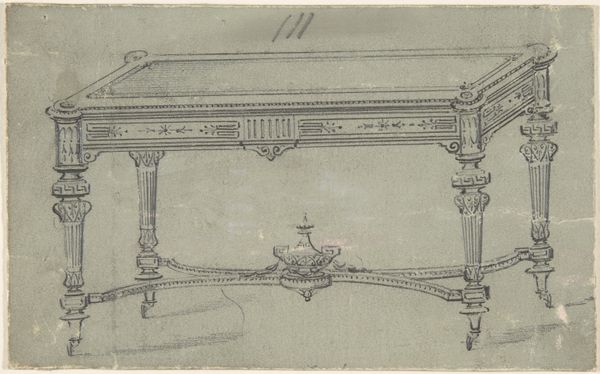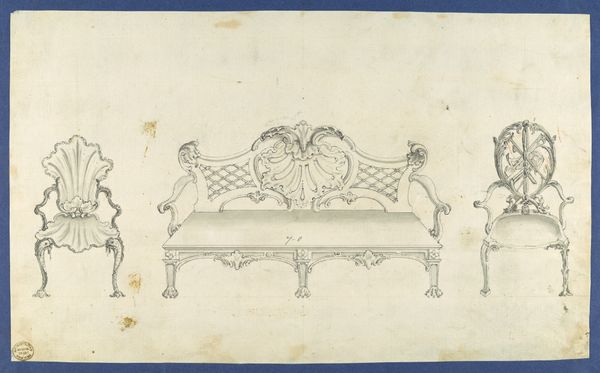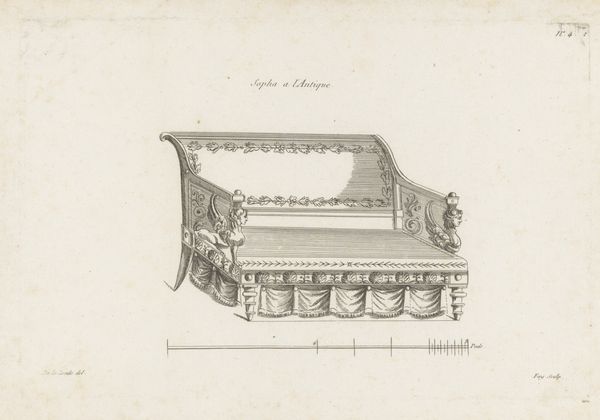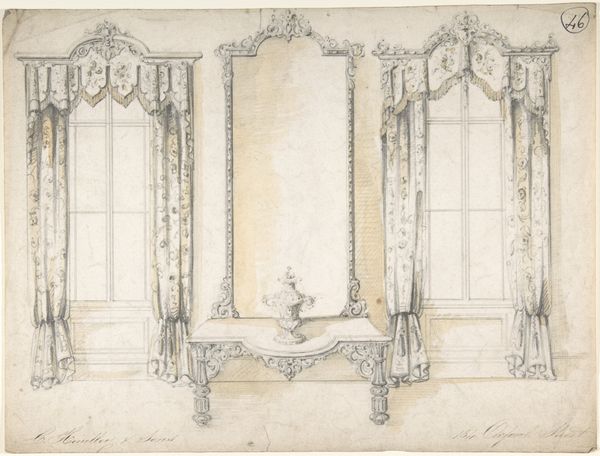
drawing, print, watercolor
#
drawing
#
neoclacissism
# print
#
watercolor
#
decorative-art
#
watercolor
Copyright: Public Domain
Editor: This watercolor drawing, "Design for a Fireplace Grate," dates from 1800 to 1900. It looks quite formal, almost imposing. What historical contexts might inform our understanding of this design, and how do those times intersect with ideas about class and power? Curator: Well, the Neoclassical style points to a period obsessed with Roman ideals, doesn’t it? A fireplace grate isn't just functional; it is making a statement. The question is, what's being stated here? Does the visual language of power—symmetry, classical motifs—reinforce existing social hierarchies? Editor: So, the fireplace becomes almost a stage for performing status? The crisp lines and symmetrical layout contrast sharply with the chaos that a fire represents! Curator: Exactly! It's not about warmth, but about visual control. Now, consider the materials: Who would have had access to a fireplace like this? Think about the labor required, the consumption it represents, and how this connects to notions of wealth. How does the "anonymous" artist potentially reinforce those hierarchies? Editor: The fireplace suggests ideas of gender, too, as women might have occupied this domestic space more. But it’s hard to draw those conclusions, considering the artist is anonymous, right? Curator: Precisely! Does anonymity serve to detach the artist from reinforcing existing social hierarchies, or does it function as a veil? Whose comfort were they curating, and at what cost? Editor: This makes me think about how design choices, seemingly small, carry heavy social and historical weight. Thanks, that’s really expanded my view! Curator: Absolutely! Hopefully you understand how to appreciate that every aesthetic choice is laden with potential historical significance.
Comments
No comments
Be the first to comment and join the conversation on the ultimate creative platform.
